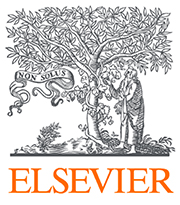a1
COVID-19: Discovery, diagnostics and drug development
Fecha de recepción: 18/05/2020
Fecha de aceptación:
14/09/2020


Abstract
Coronavirus disease 2019 (COVID-19) started as an epidemic in Wuhan in 2019, and has since become a
pandemic. Groups from China identified and sequenced the virus responsible for COVID-19, named severe
acute respiratory syndrome coronavirus 2 (SARS-CoV-2), and determined that it was a novel
coronavirus sharing high sequence identity with bat- and pangolin-derived SARS-like coronaviruses,
suggesting a zoonotic origin. SARS-CoV-2 is a member of the Coronaviridae family of enveloped, positivesense,
single-stranded RNA viruses that infect a broad range of vertebrates. The rapid release of the
sequence of the virus has enabled the development of diagnostic tools. Additionally, serological tests can
now identify individuals who have been infected. SARS-CoV-2 infection is associated with a fatality rate
of around 1â3%, which is commonly linked to the development of acute respiratory distress syndrome
(ARDS), likely resulting from uncontrolled immune activation, the so called âcytokine stormâ. Risk factors
for mortality include advanced age, obesity, diabetes, and hypertension. Drug repurposing has been used
to rapidly identify potential treatments for COVID-19, which could move quickly to phase III. Better
knowledge of the virus and its enzymes will aid the development of more potent and specific directacting
antivirals. In the long term, a vaccine to prevent infection is crucial; however, even if successful,
it might not be available before 2021-22. To date, except for intravenous remdesivir and
dexamethasone, which have modest effects in moderate to severe COVID-19, no strong clinical evidence
supports the efficacy of any other drugs against SARS-CoV-2. The aim of this review is to provide insights
on the discovery of SARS-CoV-2, its virology, diagnostic tools, and the ongoing drug discovery effort.
© 2020 European Association for the Study of the Liver. Published by Elsevier B.V. All rights reserved.
Key Word
SARS-CoV-2, Coronavirus, Pathogenesis, Drug repurposing, Remdesivir.
COVID-19: Discovery, diagnostics and drug development
Tarik Asselah1,*, David Durantel2, Eric Pasmant3, George Lau4, Raymond F. Schinazi5
1Université de Paris, CRI, INSERM UMR 1149, Department of Hepatology, AP-HP Hôpital Beacon, Clichy, France;
2INSERM, U1052, Cancer Research Center of Lyon (CRCL), Université de Lyon (UCBL1), CNRS UMR_5286, France;
3Service de Génétique et Biologie Moléculaires, Hôpital Cochin, DMU BioPhyGen, AP-HP.Centre-Université de Paris, Institut Cochin, INSERM U1016, CNRS UMR8104, Université de Paris, CARPEM, Paris, France;
4Humanity and Health Clinical Trial Center, Humanity & Health Medical Group, Hong Kong SAR, China; Liver disease and Transplant Center, The Fifth Medical Center of Chinese PLA General Hospital, Beijing, China;
5Center for AIDS Research, Laboratory of Biochemical Pharmacology, Department of Pediatrics, Emory University School of Medicine, 1760 Haygood Drive, Atlanta, GA 30322, USA Journal of Hepatology 2021 vol. 74 j 168â184 
Since January 2020 Elsevier has created a COVID-19 resource centre with free information in English and Mandarin on the novel coronavirus COVID- 19. The COVID-19 resource centre is hosted on Elsevier Connect, the company's public news and information website. Elsevier hereby grants permission to make all its COVID-19-related research that is available on the COVID-19 resource centre - including this research content - immediately available in PubMed Central and other publicly funded repositories, such as the WHO COVID database with rights for unrestricted research re-use and analyses in any form or by any means with acknowledgement of the original source. These permissions are granted for free by Elsevier for as long as the COVID-19 resource centre remains active.
|